Spinosaurus
Name Origin
Spine Lizard
Family
Spinosauridae
Classification
Diapsida, Saurischia, Theropoda
Habitat (Discovery Location)
Egypt, Tunisia, Morocco
Period
125 to 99 million years ago (Early Cretaceous to Mid-Cretaceous)
Length
Approximately 13 to 15 meters
Weight
Approximately 6 to 9 tons
Diet
Carnivore (e.g., fish)
 Jurassic
Jurassic
Park / World Featured Dinosaur
Appearance in Jurassic Park III
Jurassic Park III marked the memorable film debut for the Spinosaurus, where it left a powerful impression as the movie's signature dinosaur. It is no exaggeration to say that the high level of fame Spinosaurus enjoys today was established by this film.
For this installment, it was selected as the signature dinosaur based on the prevailing scientific theory at the time that it was the "largest carnivorous dinosaur." It was given the exceptionally rare treatment of even being featured on the title logo. According to paleontologist Dr. Jack Horner, who consulted on the production, this Spinosaurus was chosen as the new star attraction to replace the Tyrannosaurus (T-Rex), which had been the main dinosaur in the previous films.
It was portrayed as a male, reigning as an apex predator on Isla Sorna alongside the Tyrannosaurus. Official materials state its length as 13.3 meters, which is one of the largest figures in the entire series (second only to the Indominus rex and Giganotosaurus in length).
Its aggressive nature was emphasized in the film, and it was even shown invading the T-Rex's territory after reacting to its territorial markings. The power it demonstrated with its massive body was immense, boasting high combat abilities such as:
・The power to crush a steel airplane fuselage with a single foot.
・The charging force to smash through a reinforced steel fence with a body slam.
・The combat prowess to defeat a sub-adult Tyrannosaurus in a head-on fight.
Its physical durability was also exceptional; it showed incredible toughness, breaking through a sturdy fence with brute force and not even flinching when a small plane scraped against its body. Its athletic ability was also high, and it was stated to be capable of running at 43 km/h on land. Furthermore, it possessed the ability to swim, not just hunt on land. It was depicted as a terrifying amphibious predator, capable of pursuing and attacking Dr. Grant's group from the water as they tried to escape on a boat.
In contrast to its overwhelming strength, director Joe Johnston stated that its intelligence was intentionally set lower than that of the T-Rex. An unusual anecdote for a signature dinosaur was revealed in the special features, where he was commented on as "a bit of a big idiot." Several scenes in the film seem to reflect this characterization.
Additionally, according to lore later revealed on the DPG (Dinosaur Protection Group) website, this individual was a creature secretly created between 1998 and 1999, in violation of the "Gene Guard Act." This would make its age only 2-3 years old at the time of JPIII, but the producer has stated that this individual was "full-size" (an adult). This is presumably because the accelerated growth genetic engineering, applied to InGen's cloned dinosaurs, was also applied to this specimen.
The memorable river attack scene in the film was adopted as an homage to a scene cut from the first Jurassic Park, in which the Tyrannosaurus was supposed to attack the boat on the river.
However, following the movie's release, significant advancements in research have drastically changed the scientific understanding of Spinosaurus's ecology. The terrestrial, combat-heavy depiction in the film is vastly different from current paleontological knowledge. Dr. Jack Horner, who served as the paleontological consultant at the time, later commented, "We had to depict it as fiction. We know now that it was an aquatic animal that ate nothing but fish," indicating the film's portrayal was purely a creative decision.Appearance in Jurassic World
It does not appear as a living creature. (It is also not included on the park's official species list.)
However, its skeletal specimen makes a memorable appearance. This skeleton was displayed on Main Street, but during the film's climax, it is spectacularly smashed to pieces by the "Queen of Isla Nublar" (the Tyrannosaurus).
Based on the crests on its head, this skeleton is presumed to be a reconstruction of the real-world Spinosaurus, rather than the specific individual featured in Jurassic Park III.
Incidentally, the film's release year, 2015, also marked the 100th anniversary of the first discovery (excavation) of Spinosaurus fossils.

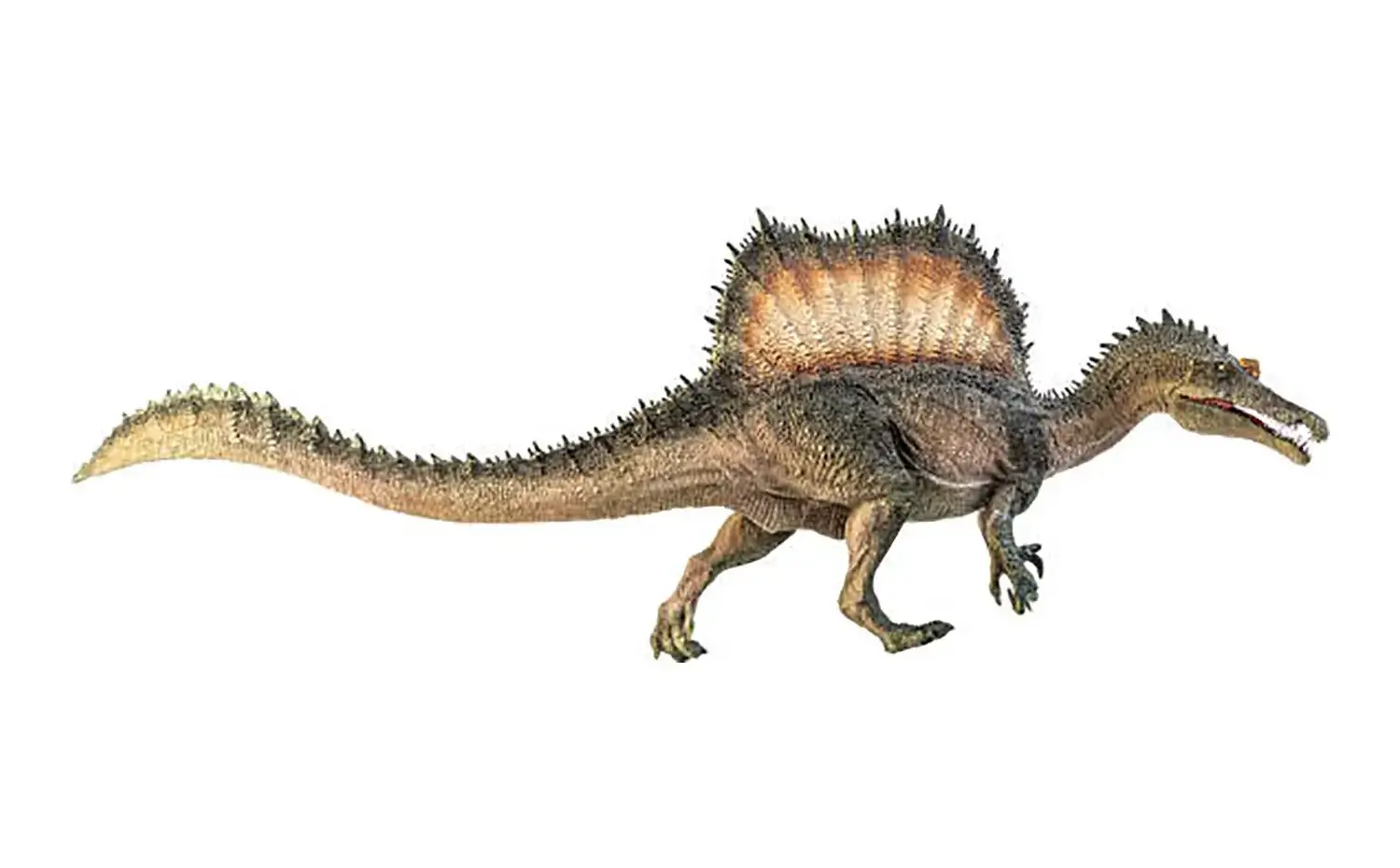
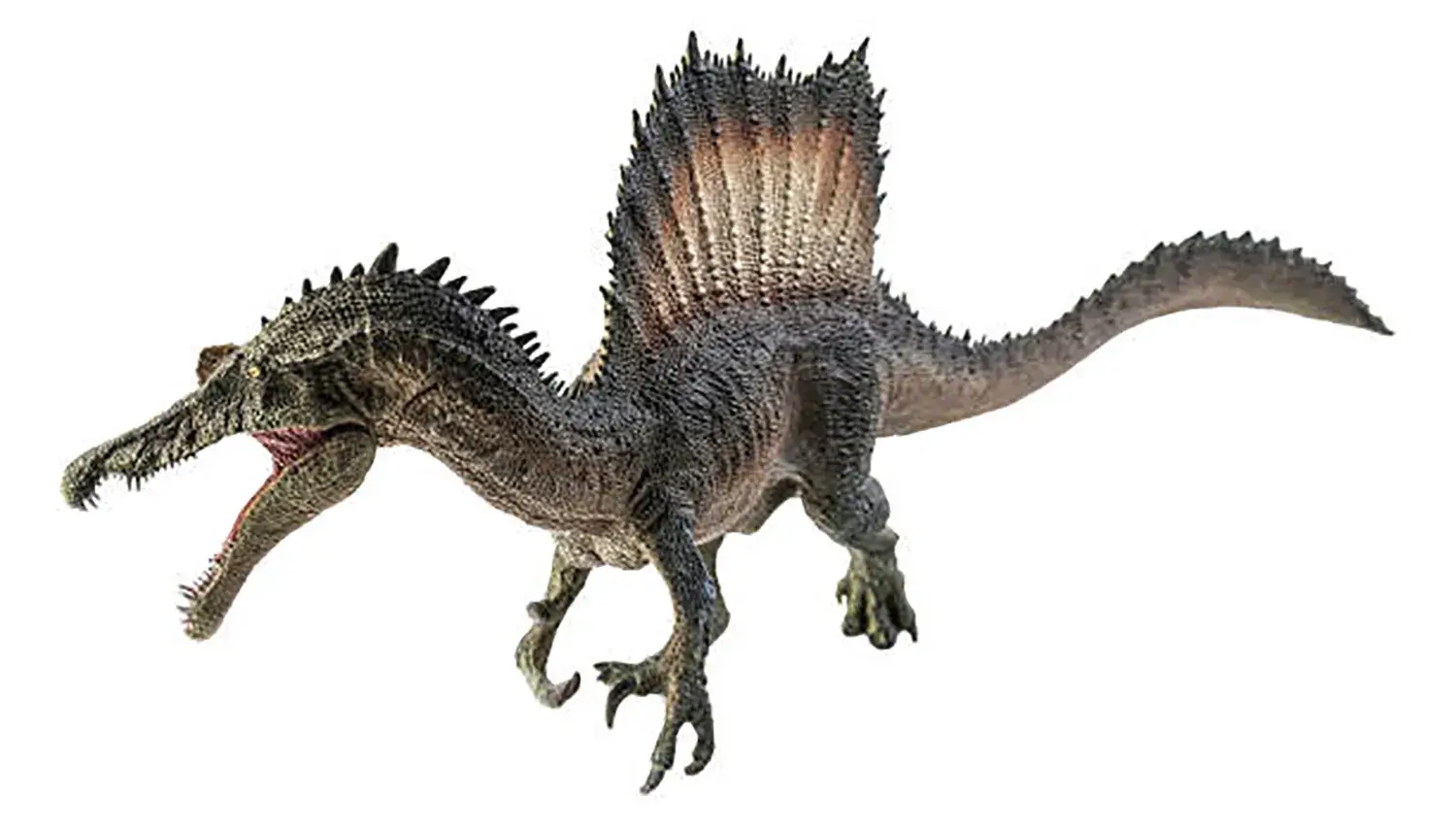
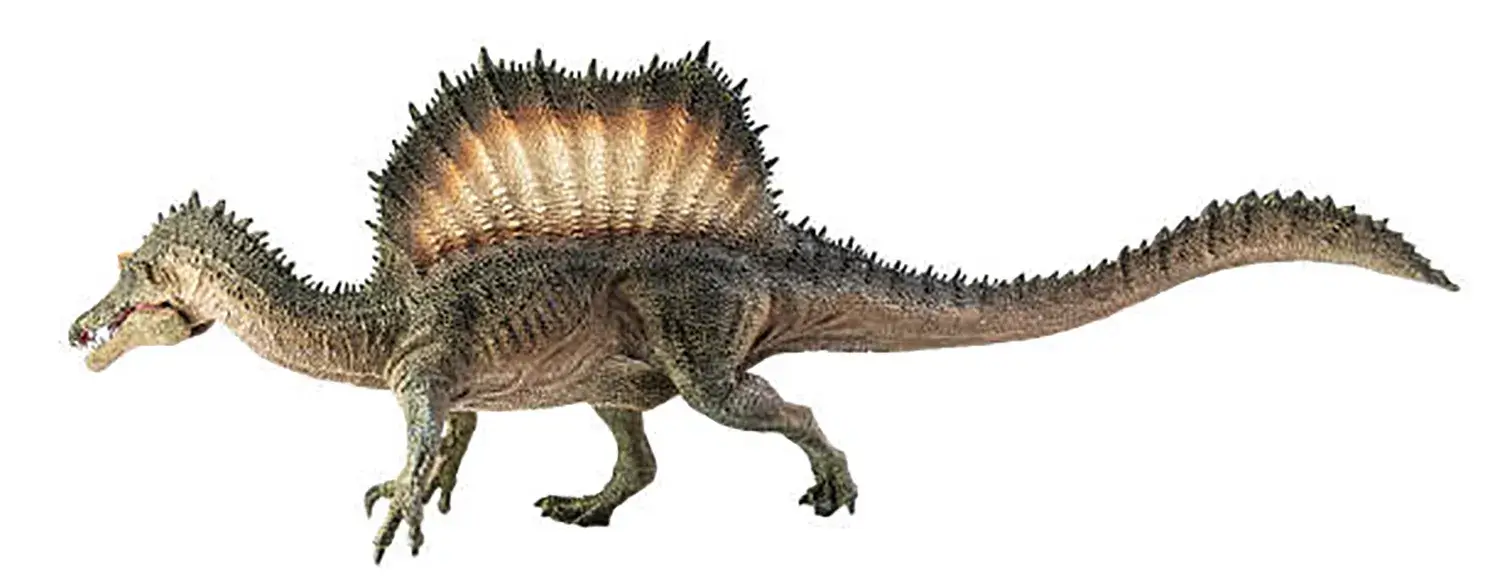
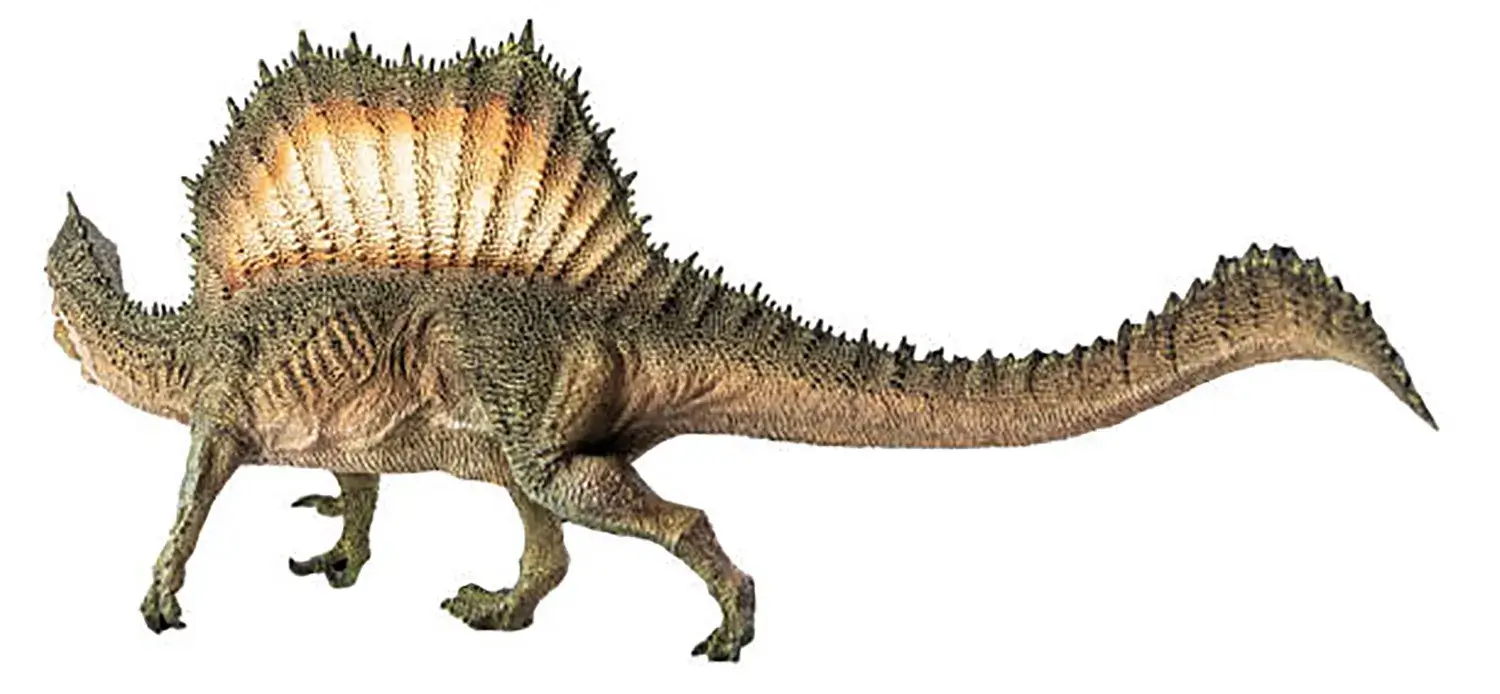
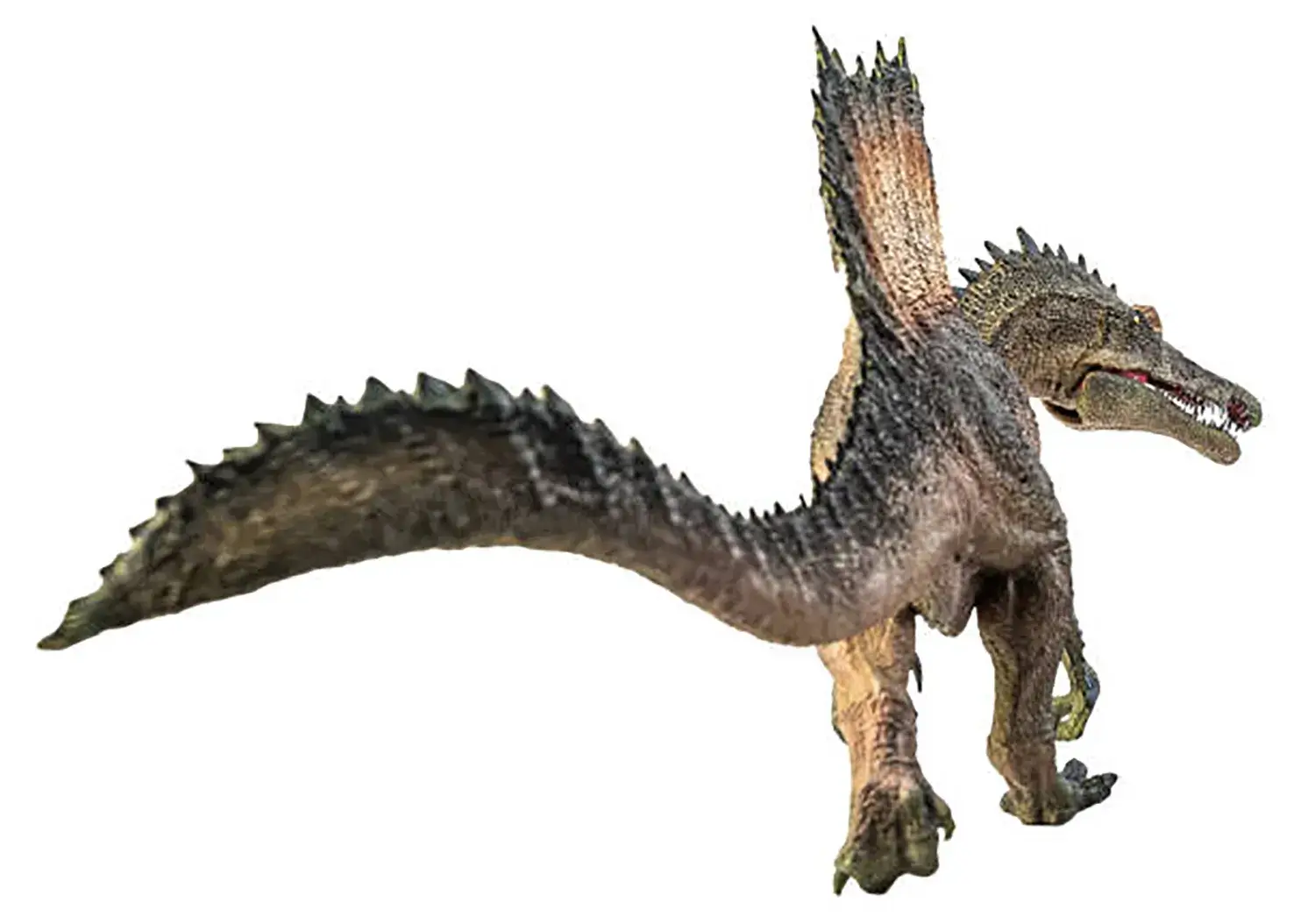
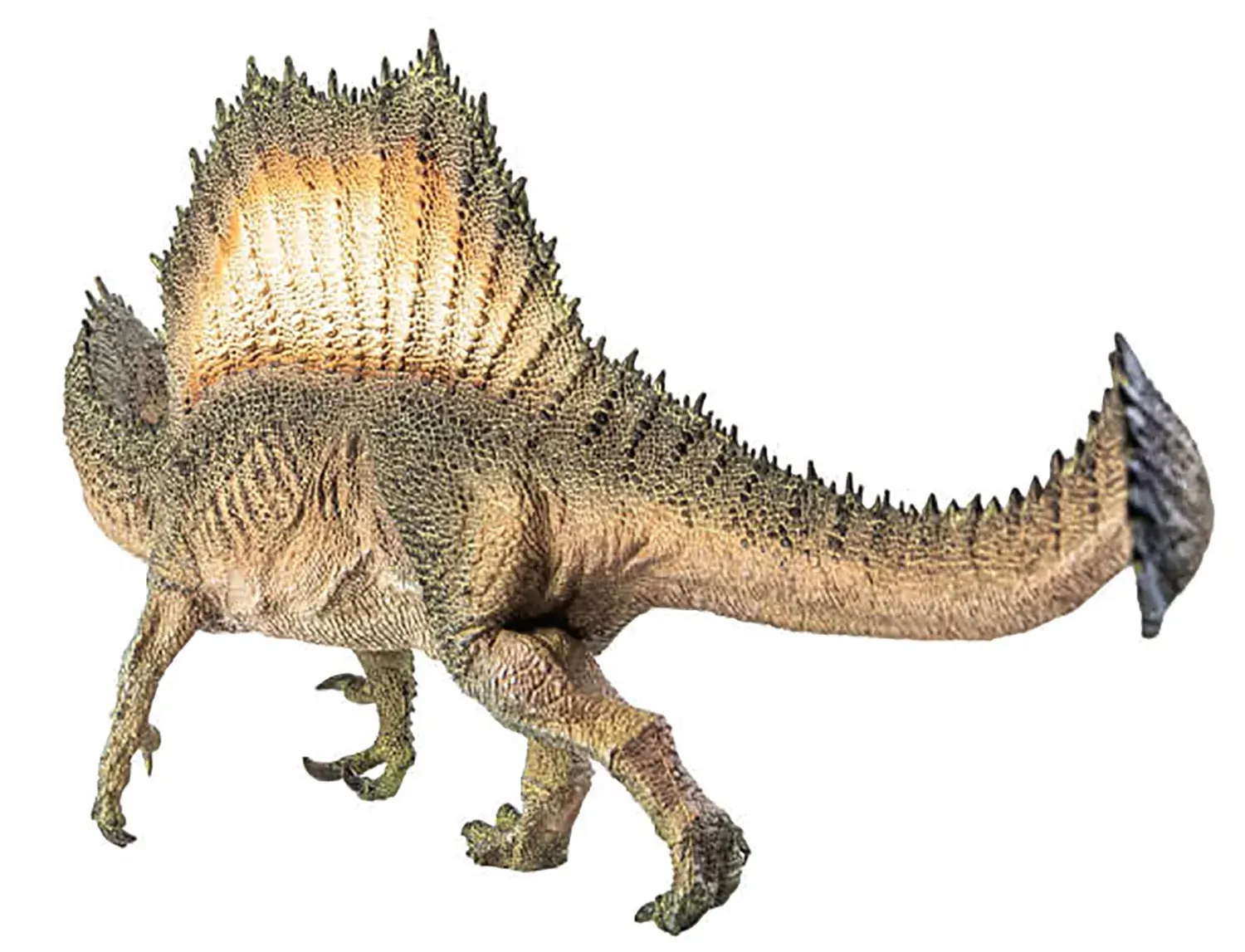
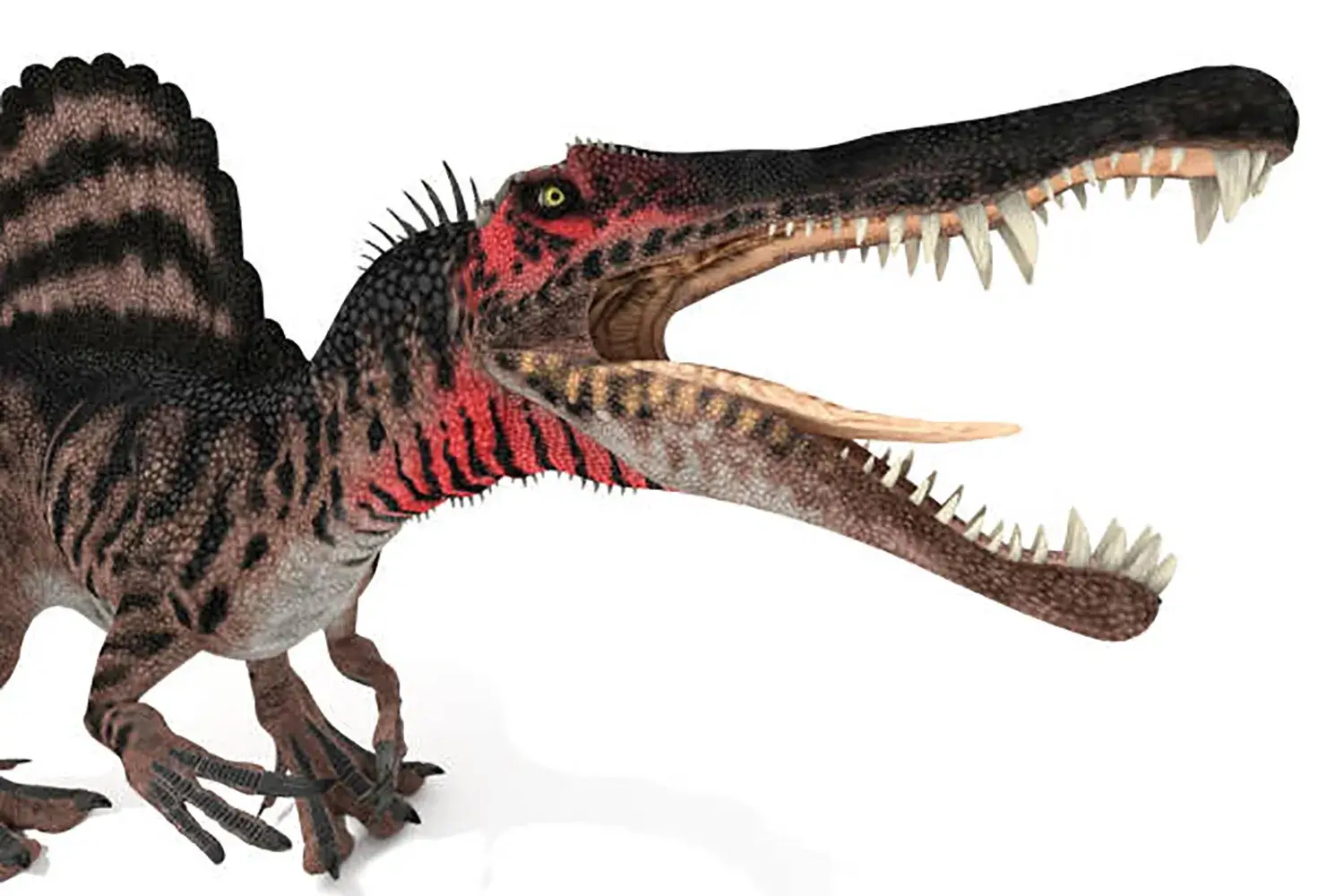
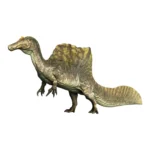
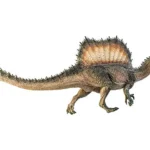
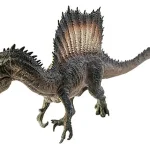
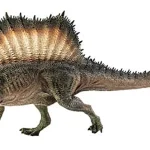
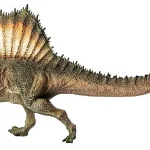

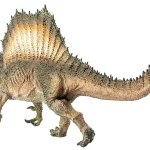
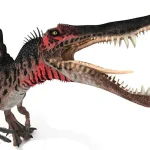


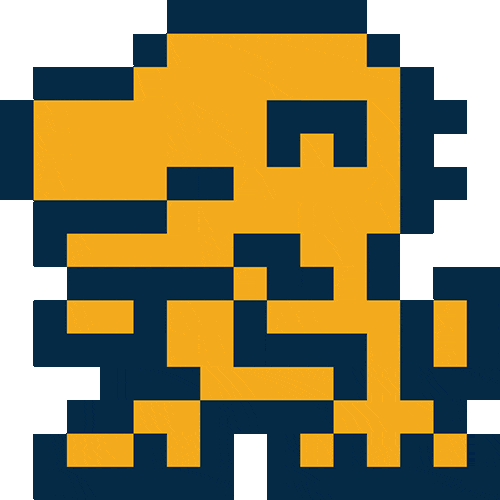



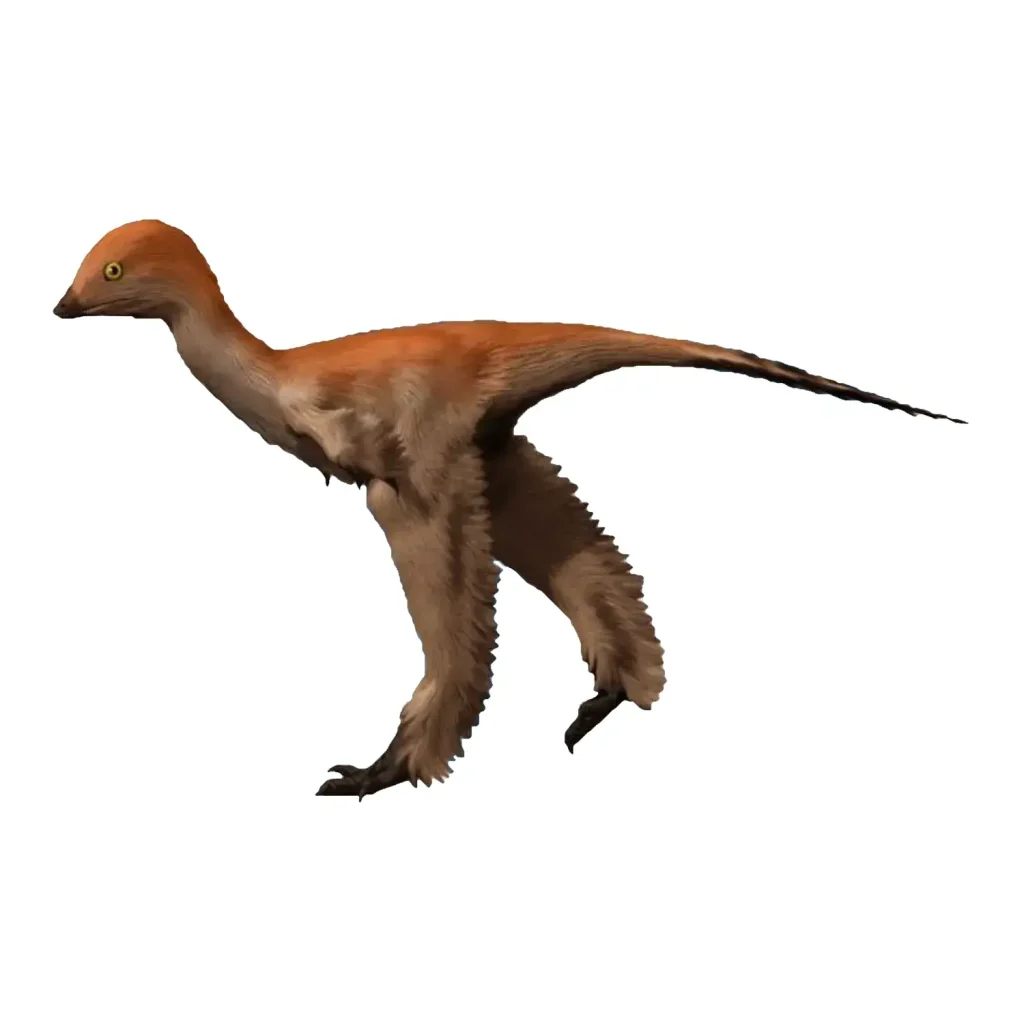













Description
Spinosaurus was a large carnivorous dinosaur that lived in Egypt during the Late Cretaceous period.
Its name, meaning “spine lizard,” is derived from the massive, sail-like spines on its back that could reach a height of 2 meters.
It was characterized by a sail-like projection on its back.
It is estimated to have been between 13 and 15 meters long, and it holds its position as the largest theropod in history, surpassing Tyrannosaurus and Carcharodontosaurus.
A Storied History and Lost Fossils
The Spinosaurus fossil was first discovered in western Egypt in 1915 by German paleontologist Ernst Stromer.
Due to its unusual appearance and size for a dinosaur of that time, its name became widely known.
However, on April 24, 1944, during World War II, most of the valuable fossils held in the Bavarian State Collection of Paleontology and Geology in Germany were destroyed in an Allied air raid.
With the destruction of the world’s only specimen, the complete picture of Spinosaurus was once again shrouded in mystery.
Although a mid-cervical vertebra believed to be from a Spinosaurus was found in Morocco around 1996, the discovery of a high-quality fossil did not happen until 2013, earning Spinosaurus the nickname “dinosaur of mystery.”
In recent years, a large number of tooth fossils have been excavated from Morocco, making Spinosaurus teeth affordable enough to be easily acquired.
From Land to Water: New Discoveries That Overturned Conventional Wisdom
Spinosaurus was once thought to be a bipedal predator on land, as depicted in the movie Jurassic Park III.
However, a series of recent discoveries has largely overturned this conventional wisdom.
It is now considered a highly adapted “aquatic pursuit predator” that primarily lived in water.
This “aquatic theory” has been one of the hottest topics in paleontology since 2014.
The Aquatic Adaptation Theory Proposed (2014)
A research team led by Dr. Nizar Ibrahim of the University of Chicago, based on new fossils discovered in Morocco, announced that Spinosaurus had remarkably short hind limbs and bone density similar to that of aquatic animals.
They proposed the revolutionary theory that it “primarily lived in water,” but this was met with some counterarguments at the time, such as the unknown shape of its tail that would have provided propulsion.
Discovery of a Paddle-Shaped Tail (2020)
The discovery of a fossilized tail in 2020 overturned those counterarguments.
Unlike the thin shape of other theropods’ tails, this tail had highly developed neural spines, giving it the shape of a massive “paddle.”
This was irrefutable evidence that it used its tail to generate propulsion and swim powerfully in the water.
It is believed that by swinging this tail from side to side, it could create great propulsive force underwater.
It could generate propulsion by swinging its tail in the water.
Penguin-like Bones (2022)
In 2022, a research team further demonstrated that Spinosaurus’s bones had a dense and heavy core, much like those of diving penguins, hippos, and crocodiles.
This suggests that the bones functioned as “weights” to suppress buoyancy and allow it to submerge in water.
These discoveries established a new image of Spinosaurus as an “aquatic pursuit predator” that not only waited for fish at the water’s edge but also actively swam and chased its prey underwater.
A Crocodile-like Head and Sensors
Its head had a shape similar to a crocodile’s and reached a size of about 2 meters.
This is the largest among theropods.
Its narrow, crocodile-like snout and conical teeth, which were perfect for catching fish, indicate that it was piscivorous.
The longest teeth at the tip of its lower jaw interlocked with the upper teeth, much like a modern crocodile’s.
It is also believed that there were many small holes at the tip of its snout, similar to those found in living crocodiles, which served as sensors to detect fish in murky water.
Its head had a shape similar to a crocodile’s.
The Mysterious Role of the “Sail”
The most distinctive feature of Spinosaurus was the sail-like structure on its back, which was supported by bones that extended from its spine and formed a ridge up to 2 meters high, covered by skin and muscle.
However, the purpose of this sail is still not fully understood today.
It was once believed that the sail functioned in thermoregulation, much like the back plates of a Stegosaurus. However, detailed examination revealed no traces of the blood vessels seen in a Stegosaurus, so this theory has been debunked.
There was also a theory that it was a hump for storing energy, but this would have made its back too heavy and difficult to balance, so that theory has also been rejected.
The most plausible current theories are that it was a display for intimidation or for attracting a mate, or that it acted as a “vertical rudder” to maintain stability in the water.
However, a fossil of a Spinosaurus’s sail with bite marks from a contemporary carnivore, Carcharodontosaurus, has also been found, which suggests that the sail may not have been very sturdy.
Ecology and Characteristics
As a terrestrial predator, Spinosaurus may have occasionally competed with Carcharodontosaurus for prey.
Its aggressive nature is also evident in fossils of its bones with bite marks from its own kind.
However, its main diet was fish, and its long, slender jaw was well-suited for catching fish in the water.
In fact, a Spinosaurus fossil was once found alongside a fossil of a 3-meter-long fish.
Additionally, Spinosaurus’s hind limbs were remarkably short compared to other large theropods, making them ill-suited for supporting its weight on land.
Its feet may have had webbing, and its three toes had long claws, which were perfect for hooking fish.
These discoveries have led to the conclusion that Spinosaurus had a unique ecology, moving between both land and water.